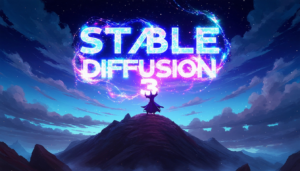At some point today, you will forget something. It could be for a couple of seconds, a few hours, or possible multiple weeks. Sometimes forgetting something will be inconsequential, or a mild inconvenience. Other times, such as in an exam, it can be detrimental. But how can you help this predicament if you have a poor memory?
People have been studying memory for years. Some claim to have an eidetic (or photographic) memory, but science has never been able to conclusively prove that it is possible. So how do people renowned for their memory skills achieve feats such as memorising a shuffled deck of cards in 20 seconds? They use memory techniques.
Here are a few you may want to try out the next time you are trying to commit something to memory.
Repetition
We’ll open with the technique most commonly put into practice – repetition of the thing you need to remember. Think of some of your most vivid memories. They are likely vivid to you because you have thought about them again and again and again over the years. Conversely, you’ll sometimes find someone coming up to you and saying “Remember me?!”, yet find yourself unable to place them. This is likely because your previous interaction was so nondescript that you never thought about it again.
So while this shows that repetition works, its best use is for short term memory only, especially if you want to remember things accurately. The memories you remember so well have likely become less than 100% accurate as time has gone by. That’s fine when it comes to nostalgia, but not great if you have an exam to study for.
Link Technique
One of the most basic memory techniques is the “link” technique. This method takes the age old idea of a list, and makes connections between the items listed. This is done through making visual links between items, and having them all lead into the next item.
Picture a shopping list:
- Bread
- Ham
- Water
You could do this by repeating the list several times, but you may find it easier to link all three together. You could be boring and say “Bread can be made into a ham sandwich, which I wash down with a bottle of water”. But tests have shown that the more vibrant and imaginative a story, the stronger the memory will be. So the better story would be –
“There’s a field full of bread, and one pig who is eating it all. He eats too much and rolls over in the heat, but he gets cooled down when a massive bottle of water in the sky empties on top of him.”
The bigger, louder and more colourful, the better.
Journey Technique
A different take on the link idea, this expands the idea to a journey through a particular place. Like a tour basically. It;s best to imagine somewhere you know well, such as your house. You could plot a pretty long journey around your house, and interact with many things. And those interactable items become the key – you literally hang memories on them.
Say you are memorising for a history exam. You get out of your bed, look to your wall, and see a big picture of Winston Churchill. Below it, on your dresser written in socks, is the date 4-6-1940, next to a pile of sand with little toy soldiers on it. This is to remind you of Churchill’s famous “we will fight them on the beaches” speech, which he gave on the 4th of June 1940. The little toy soldier could be firing something at the wall in the next room, and you would follow it through to the next piece of information, and so on.
This technique in particular is recommended for students, as it allows them to marry vital information to familiar locales. You aren’t going to forget your house anytime soon, so as long as the memory is imaginative, and repeated frequently, the information will stick.
Mind Palace
This one isn’t for everyone, to say the least! It is essentially the journey technique expanded to it’s full potential. Users of this technique picture a literally palace with thousands of rooms, each dedicated to a certain topic. They simply picture their palace, walk through it, and reach the room they require. It takes intense practice, and is likely too advanced for most of the population of the planet. So I wouldn’t start looking for planning permission for your mind palace just yet!
Video on Mind Palaces –
Guest Author Bio –
“ Lily is a 20 something, full time student and a productivity, tech and gadgets blogger. She does it for passion and loves to write about anything on productivity, tech & gadgets”
















